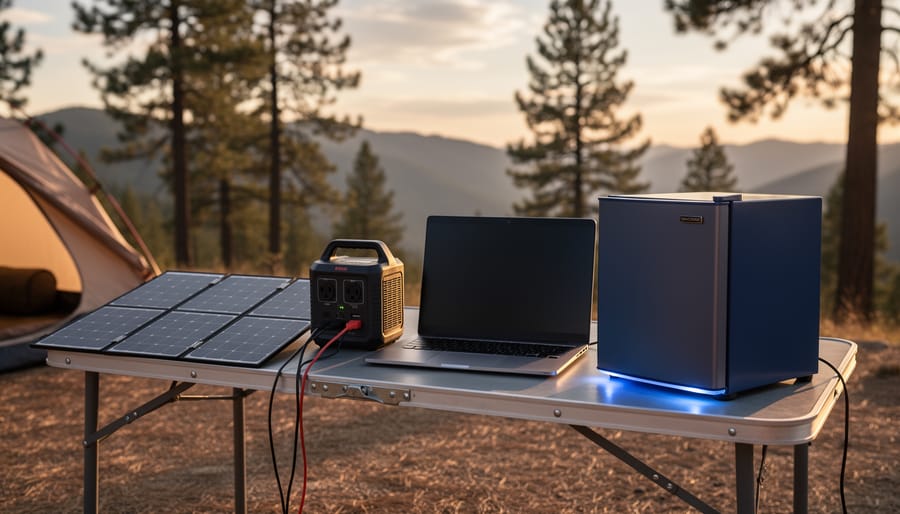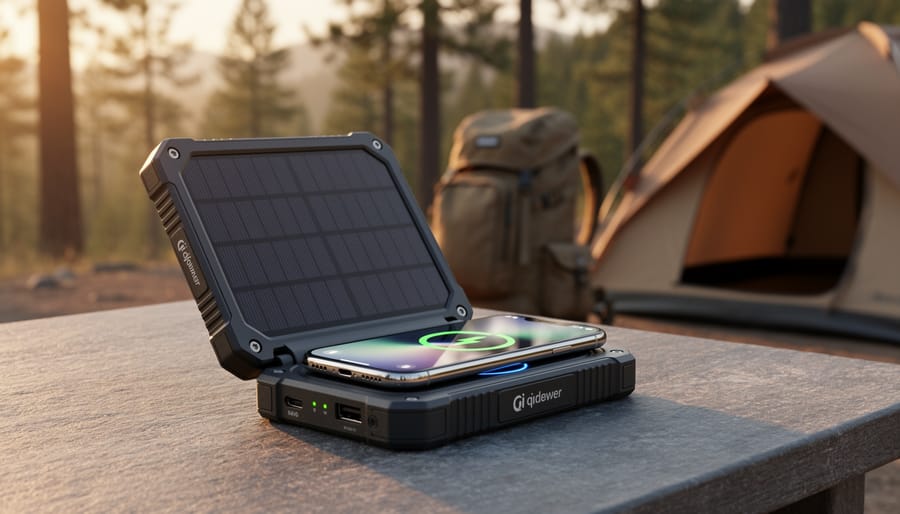Powering Your Wrist: Automatic vs. Solar Watch Comparison
Updated:

In a world where technology continues to shape how we interact with time, wristwatches have evolved beyond mere timekeepers. The choice between an automatic vs solar watch has become a defining feature for watch enthusiasts and everyday wearers alike.
Automatic watches, powered by wrist movement, excel in craftsmanship but may require frequent adjustments for time accuracy. Solar watches, on the other hand, use light to charge a battery and are generally more accurate and low-maintenance.
Your choice between the two will depend on your specific use case, whether you prioritize mechanical artistry or long-term, hassle-free accuracy.
In this comprehensive article, we will examine all aspects of automatic and solar watches in detail. So let’s dive in.
How Do Automatic Watches Work?
Automatic watches come from the family of mechanical watches. These watches use gears and springs to keep time.
The key part that sets them apart is the oscillating weight. This weight shifts as you move your wrist, winding a mainspring in the process.
- Oscillating Weight: A semi-circular piece of metal that moves with the motion of your arm.
- Mainspring: This is the energy storage. When it’s wound up, it stores energy that keeps the watch running.
- Power Reserve: This tells you how long the watch can run without more winding. The typical power reserve is between 40 to 70 hours.
Automatic Watch Movements

In an automatic watch, the movement serves as the central mechanism that makes everything tick. Within this movement, two key components stand out for special mention: the caliber and the jewels.
- Caliber: This is essentially the model number of the movement. It identifies the specific arrangement and functionality of the gears and springs. For example, certain Seiko watches use a movement called Caliber 7S26.
- Jewels: In the context of the watch movement, jewels are not just ornamental. They are tiny gemstones integrated into the automatic movement to reduce friction between metal parts. A greater number of jewels typically indicates a higher-quality, more precise movement.
How Do Solar Powered Watches Work?
Solar watches offer a blend of simplicity and high technology. The core mechanism in these watches is the movement, much like in automatic watches.
However, the components vary. The solar movement integrates a solar cell, electrical circuits, and a quartz crystal.
There are three essential components in a solar watch:
- Solar Cell: Positioned beneath the watch dial, the solar cell captures light. It converts this light into electrical energy, which is the first step in powering the watch.
- Rechargeable Battery: After the solar cell converts the light into energy, this battery stores it. With a full charge, the watch can run for several months without requiring additional light exposure.
- Quartz Crystal: This is a crucial component in maintaining time accuracy. The quartz crystal vibrates at a stable frequency when electrified.
Automatic vs Solar watches: Head to Head

There are certain key factors, such as accuracy, longevity, water resistance, cost, and style, that set automatic and solar watches apart.
Let’s look at them one by one.
Accuracy
When it comes to timekeeping accuracy, solar watches tend to be more accurate than automatic watches overall.
Quartz movements rely on the steady vibrations of a quartz crystal, which gives solar watches excellent accuracy to within seconds per year. This accuracy remains consistent over time.
On the other hand, Automatic movements have tiny inaccuracies caused by friction between moving parts. These tiny errors accumulate resulting in automatic watches gaining or losing seconds per day.
Frequent syncing with time signals is needed for the highest accuracy with an automatic watch.
Durability and Longevity
Both automatic and solar watches can have very long lifespans if properly cared for.
Quality automatic watches are built to last generations with proper servicing every 5-7 years to keep parts lubricated and functioning perfectly. Auto watches just need to be worn regularly to keep wound up.
Solar watches can potentially run maintenance-free for decades thanks to their rechargeable batteries and lack of moving parts to wear out. But eventually, batteries may need replacement after years of recharging cycles.
For the longest uninterrupted performance, solar watches are the most durable low-maintenance choice.
Water Resistance
Most quality automatic and solar watches offer good water resistance suitable for swimming, snorkelling, and water sports.
100m (330ft) water resistance is common in both types of watches and sufficient for recreational swimming. Solar watches can sometimes be found with 200m (660ft) ratings also. Certain diving watches may provide 300m (1000ft) depth capability or more.
The key to water resistance is a well-crafted, sealed case. This means the level of water protection isn’t about whether the watch is solar or automatic; it’s about the build quality. Both types can offer strong water resistance.
Cost Comparison
In general, solar watches tend to cost less than automatic watches. The main reasons are:
- Mass-produced quartz movements are inexpensive to make compared to mechanical automatic movements.
- Solar rechargeable batteries are affordable, while quality automatic winding mechanics require intricate parts and craftsmanship.
- Many solar watches are made from economical materials like resin and mineral glass, keeping costs down.
Solar watches offer budget-friendly options, often priced under $100. In contrast, entry-level automatic watches typically start in the $200-$500 range. For luxury automatic models, expect to pay $1000 or more.
Style Differences
Both solar and automatic watches come in a variety of styles, but there are common trends.
- Solar watches lean sporty and futuristic in styling, suiting their tech-powered practicality.
- Automatics often have traditional sizing and materials like leather straps, favouring a classic refined aesthetic.
But these are just generalizations – there is tremendous style diversity across both types of watches.
Ultimately you can find simple, dressy, sporty, and modern designs in either solar or automatic watches. Choose based on the style you like rather than the type of movement.
How Do They Perform Under Different Conditions?
Automatic watches are sensitive to their surroundings. Extreme temperatures can affect the lubricants inside, while magnetic fields can mess with the gears. So, it’s good to be mindful of where you wear your automatic watch.
- Temperature: Automatics may malfunction in very hot or cold conditions.
- Physical Activity: The internal moving parts make them less suited for high-impact sports.
On the other hand, solar watches are robust and versatile, making them suitable for a range of activities and settings. As long as they get enough light, they’re good to go.
- Light Conditions: Solar watches perform well in various light conditions. They can be charged by natural or artificial light.
- Outdoor Activities: Solar watches are often more rugged and can handle the bumps and scrapes of outdoor activities.
What’s Good About Automatic Watches?

- No Battery Needed: Automatic watches are powered by the movement of your arm, so you don’t need to worry about battery replacement.
- High Craftsmanship: These watches often have intricate internal gears, making them a favourite for people who appreciate mechanical detail.
- Longevity: With proper care, some automatic watches can last a lifetime.
- Tactile Engagement: Some people enjoy the tactile experience of winding their watch.
- Heritage and Prestige: Many high-end, luxury brands offer automatic watches, adding a level of prestige.
What’s Not So Good About Automatic Watches?
- Less Accurate: Automatic watches are generally not as accurate as solar watches and may need frequent time adjustments.
- Needs Maintenance: To keep the watch running smoothly, regular servicing is necessary, which can be expensive.
- Cost: High-quality automatic watches can be expensive, both in initial cost and maintenance.
What’s Good About Solar Watches?

- Eco-Friendly: These watches convert light into energy, making them a more environmentally responsible choice.
- Low Maintenance: Once fully charged, solar watches can run for months without needing any upkeep.
- High Accuracy: Due to quartz movements, they are often more accurate than automatics.
- Affordability: Generally, solar watches are less expensive than automatic watches.
- Functional Features: Many solar watches offer additional features like alarms, backlights, and GPS.
What’s Not So Good About Solar Watches?
- Battery Lifespan: The rechargeable battery in solar watches will eventually need to be replaced.
- Dependent on Light: Solar watches require regular exposure to light to keep running. If stored in darkness for too long, they may stop working and must be recharged.
- Limited Prestige: Fewer high-end brands offer solar options, which might be a consideration for some.
- Style Constraints: Tend to have a more modern or sporty look, which may not suit all tastes.
Which Is Better for You?
Weigh your priorities when choosing between automatics and solar watches:
Consider an Automatic Watch if You Want:
- The nostalgic charm of antique winding watch technology.
- To appreciate intricate parts crafting the movement.
- To manually wind and nurture your watch.
- A potential heirloom timepiece to last generations.
Go With a Solar-Powered Watch if You Prefer:
- The convenience of a watch that is always charged and running.
- Quartz timing with radio or Bluetooth syncing for precision.
- An affordable watch needs little maintenance.
- A durable watch with useful features like alarms.
Frequently Asked Questions (FAQs)
How Is a Kinetic Watch Different From an Automatic Watch?
A kinetic watch uses wrist motion to generate electrical energy for a quartz movement, resulting in higher accuracy.
In contrast, an automatic watch uses wrist motion to wind a mainspring, powering a mechanical movement.
Are Quartz Watches the Same as Solar Watches?
No, a quartz watch typically uses a non-rechargeable battery. Solar watches use solar watch movements to recharge their batteries.
Are All Solar Watch Movements Equally Efficient?
No, the efficiency of solar watch movements can vary based on the quality and technology of the solar cell used.










